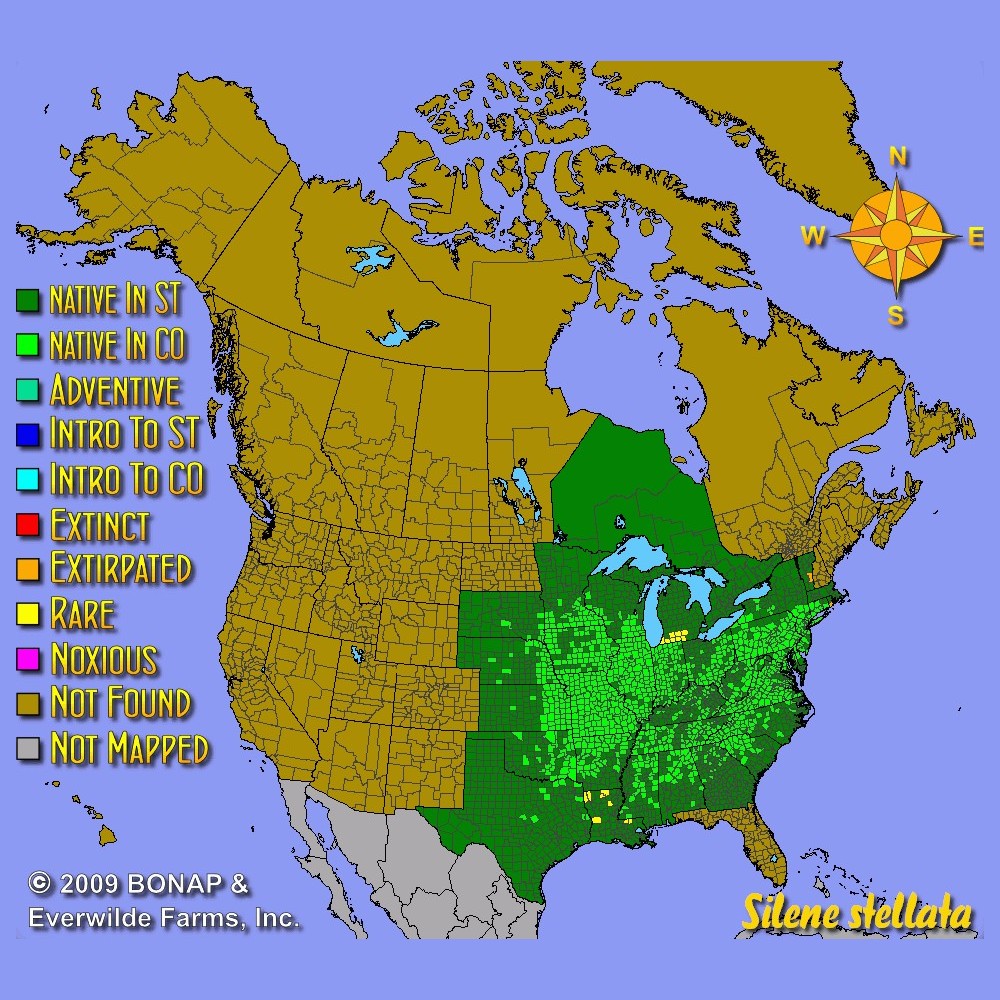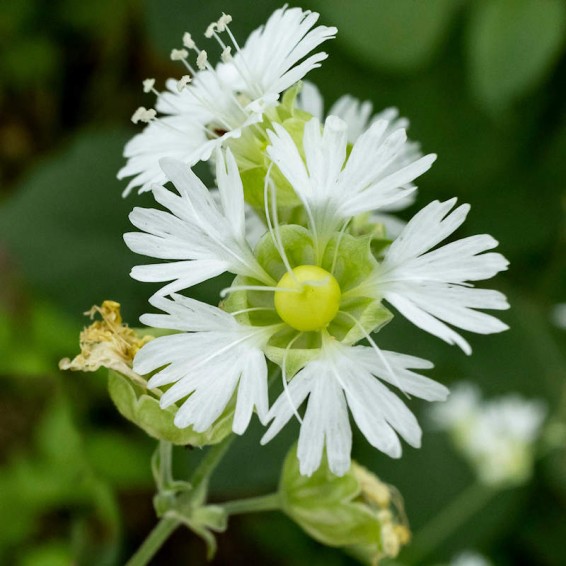Starry Campion Seeds
Silene stellata
- HOW TO GROW
- FAST FACTS
HOW TO GROW
Sowing: Direct sow in late fall, pressing into the surface of the soil. For spring planting, mix the seeds with moist sand and store in the refrigerator for 30 days before planting. Keep the soil lightly moist until germination.
Growing: Water seedlings regularly until they become established. This plant prefers rather moist soil, and watering during especially dry weather will improve its blooming. This plant attracts bees.
Harvesting: These blossoms do not perform well as cut flowers, and are best enjoyed outdoors.
Seed Saving: After the flowers fade, rounded seed pods will develop that mature from green to tan. When ripe, they will open at the top to reveal the seeds. Shake the open pods over a container to remove the seed. Store the cleaned seed in a cool, dry place.
FAST FACTS
Common Names: Widow's Frill
Latin Name: Silene stellata
Species Origin: US Native Wildflower
Type: Native Wildflowers
Life Cycle: Perennial
USDA Zones: 4, 5, 6, 7, 8
US Regions: Plains/Texas, Midwest, Northeast, Southeast
Seeds per Ounce: 30,000
Stratification: Cold/Wet for 8 Weeks
Germination Ease: Stratify 8 Weeks
Sunlight: Full Sun, Part Sun
Height: 30 Inches
Color: White
Bloom Season: Blooms Late Summer, Blooms Early Fall, Blooms Late Fall
Uses: Attracts Pollinators
DESCRIPTION

HOW TO GROW
Sowing: Direct sow in late fall, pressing into the surface of the soil. For spring planting, mix the seeds with moist sand and store in the refrigerator for 30 days before planting. Keep the soil lightly moist until germination.
Growing: Water seedlings regularly until they become established. This plant prefers rather moist soil, and watering during especially dry weather will improve its blooming. This plant attracts bees.
Harvesting: These blossoms do not perform well as cut flowers, and are best enjoyed outdoors.
Seed Saving: After the flowers fade, rounded seed pods will develop that mature from green to tan. When ripe, they will open at the top to reveal the seeds. Shake the open pods over a container to remove the seed. Store the cleaned seed in a cool, dry place.
FAST FACTS
Common Names: Widow's Frill
Latin Name: Silene stellata
Species Origin: US Native Wildflower
Type: Native Wildflowers
Life Cycle: Perennial
USDA Zones: 4, 5, 6, 7, 8
US Regions: Plains/Texas, Midwest, Northeast, Southeast
Seeds per Ounce: 30,000
Stratification: Cold/Wet for 8 Weeks
Germination Ease: Stratify 8 Weeks
Sunlight: Full Sun, Part Sun
Height: 30 Inches
Color: White
Bloom Season: Blooms Late Summer, Blooms Early Fall, Blooms Late Fall
Uses: Attracts Pollinators





